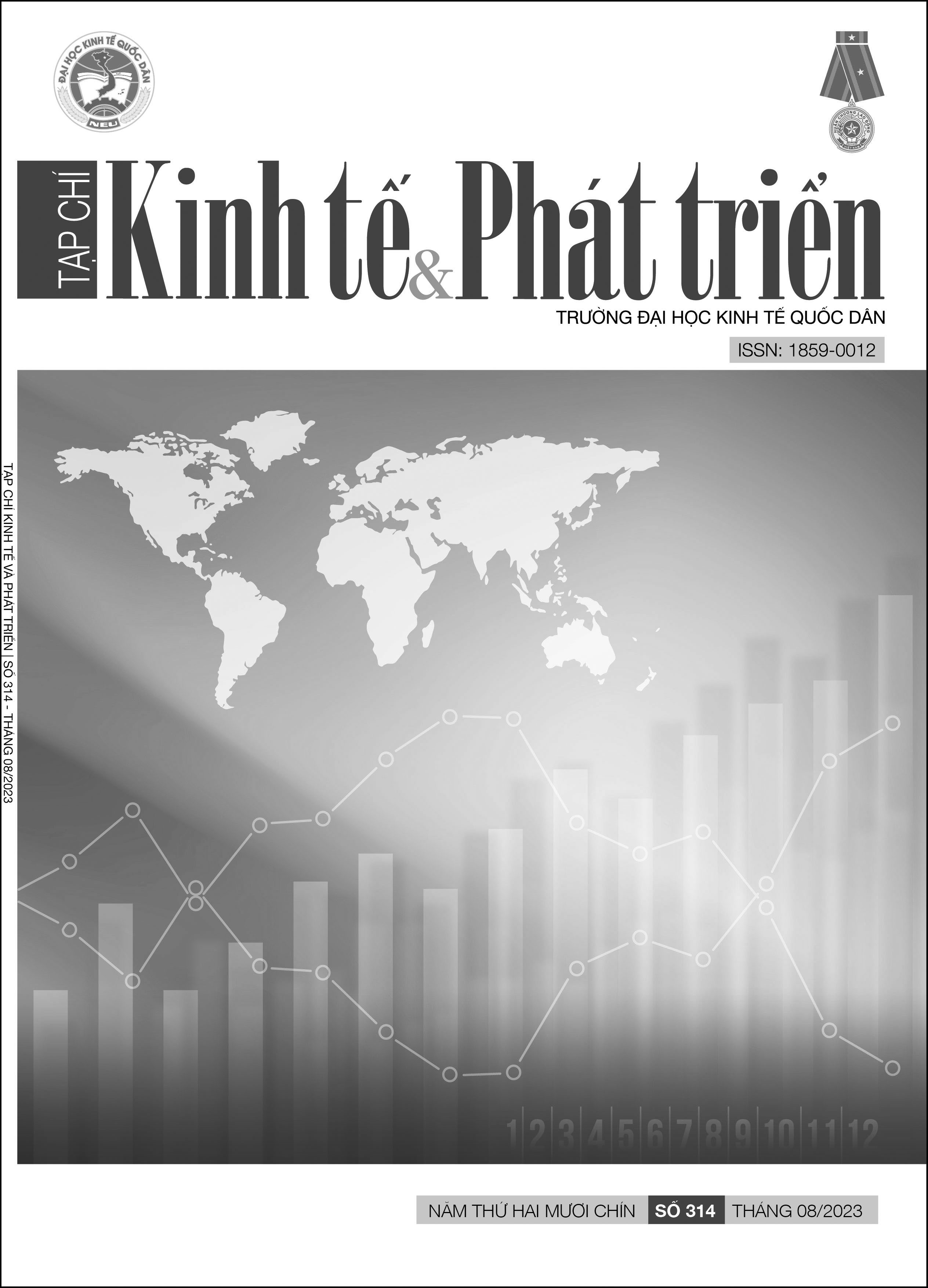Tác động của mức độ mở cửa thị trường đến xác suất xảy ra khủng hoảng tài chính
DOI:
https://doi.org/10.33301/JED.VI.1080Từ khóa:
Khủng hoảng tài chính, Mở cửa thị trường, Tự do thương mại, Tự do đầu tư, Tự do tài chínhTóm tắt
Bài nghiên cứu sử dụng dữ liệu từ 61 quốc gia trong giai đoạn 1996–2019 để phân tích tác động của mức độ mở cửa thị trường đến xác suất xảy ra khủng hoảng tài chính. Chúng tôi phát hiện ra rằng mức độ mở cửa thị trường cao hơn làm tăng khả năng xảy ra khủng hoảng tài chính, đặc biệt là khủng hoảng ngân hàng. Khi phân tích ba khía cạnh quan trọng của mở cửa thị trường, chúng tôi cho thấy việc thúc đẩy tự do thương mại làm giảm khả năng xảy ra khủng hoảng tài chính, trong khi đó nâng cao mức độ tự do đầu tư và tự do tài chính lại làm tăng xác suất khủng hoảng tài chính. Tuy vậy, tác động tích của của tự do thương mại bé hơn rất nhiều so với tác động tiêu cực của tự do đầu tư và đặc biệt là tự do tài chính.
Tài liệu tham khảo
Abiad, A., Detragiache, E., & Tressel, T. (2010), ‘A new database of financial reforms’, IMF Staff Papers, 57(2), 281–302.
Barrell, R., Karim, D., & Ventouri, A. (2017), ‘Interest rate liberalization and capital adequacy in models of financial crises’, Journal of Financial Stability, 33, 261–272.
Bermpei, T., Kalyvas, A., & Nguyen, T.C. (2018), ‘Does institutional quality condition the effect of bank regulations and supervision on bank stability? Evidence from emerging and developing economies’, International Review of Financial Analysis, 59, 255–275.
Bjørnskov, C. (2016), ‘Economic freedom and economic crises’, European Journal of Political Economy, 45, 11–23.
Chinn, M.D., & Ito, H. (2008), ‘A new measure of financial openness’, Journal of Comparative Policy Analysis, 10(3), 309–322.
Daniel, B.C., & Jones, J.B. (2007), ‘Financial liberalization and banking crises in emerging economies’, Journal of International Economics, 72, 202–221.
Dell’Ariccia, G., & Marquez, R. (2004), ‘Information and bank credit allocation’, Journal of Financial Economics, 72(1), 185–214.
Demirguc-Kunt, A., & Detragiache, E. (1998), ‘The determinants of banking crises in developing and developed countries’, IMF Staff Papers, 45, 81–109.
Gaies, B., & Nabi, M-S. (2019), ‘Financial openness and growth in developing countries’, Journal of Economic Integration, 34(3), 426–464.
Giles, C. (2008), ‘The economic forecasters’ failing vision’, Financial Times, last retrieved on June 13th 2023, from <https://www.ft.com/content/50007754-ca35-11dd-93e5-000077b07658>.
Guizani, M. (2020), ‘Macroeconomic conditions and investment-cash flow sensitivity: Evidence from Saudi Arabia’, International Journal of Finance & Economics, 26(3), 4277–4294.
Haddad, M., Lim, J.J., Pancaro, C., & Saborowski, C. (2013), ‘Trade openness reduces growth volatility when countries are well diversified’, The Canadian Journal of Economics, 46(2), 765–790.
ICC (2017), ICC Open market index: Commissioned by the ICC world trade agenda, International Chamber of Commerce, 4th ed, last retrieved on March 14th 2023, from <https://iccwbo.org/publication/icc-open-markets-index-2017/>.
Martin, P., & Rey, H. (2004), ‘Financial super-markets: size matters for asset trade’, Journal of International Economics, 64(2), 335–361.
Miller, T., Kim, A.B., & Roberts, J.M. (2022), 2022 Index of Economic Freedom, Annual Report, The Heritage Foundation.
Moyo, C., & Le Roux, P. (2020), ‘Financial liberalisation, financial development and financial crises in SADC countries’, Journal of Financial Economic Policy, 12(4), 477–494.
Nguyen, T.C. (2021), ‘Economic policy uncertainty and bank stability: Does bank regulation and supervision matter in major European economies?’, Journal of International Financial Markets, Institutions and Money, 74, 101387. DOI: 10.1016/j.intfin.2021.101387.
Nguyen, T.C., & Le, T.H. (2022), ‘Financial crises and the national logistics performance: Evidence from emerging and developing countries’, International Journal of Finance & Economics. DOI: https://doi.org/10.1002/ijfe.2768.
Nguyen, T.C., Castro, V., & Wood, J. (2022a), ‘A new comprehensive database of financial crises: Identification, frequency, and duration’, Economic Modelling, 108, 105770. DOI: 10.1016/j.econmod.2022.105770.
Nguyen, T.C., Castro, V., & Wood, J. (2022b), ‘Political environment and financial crises’, International Journal of Finance and Economics, 27(1), 417–438.
Nguyen, T.C., Castro, V., & Wood, J. (2022c), ‘Political economy of financial crisis duration’, Public Choice, 192, 309–330.
Peritz, L., Weldzius, R., Rogowski, R., & Flaherty, T. (2021), ‘Enduring the great recession: Economic integration in the European Union’, Review of International Organizations, 17, 175–203.
Ranciere, R., Tornell, A., & Westtermann, F. (2006), ‘Decomposing the effects of financial liberalization: Crises vs. growth’, Journal of Banking & Finance, 30(12), 3331–3348.
Sever, C. (2020), ‘Financial crises and institutional quality’, International Journal of Finance and Economics, 27(1), 1510–1525.
Singh, A. (2003), ‘Capital account liberalization, free long-term capital flows, financial crises and economic development’, Eastern Economic Journal, 29(2), 191–216.
Williams, J., & Nguyen, N. (2005), ‘Financial liberalisation, crisis, and restructuring: A comparative study of bank performance and bank governance in South East Asia’, Journal of Banking & Finance, 29, 2119–2154.
Yanikkaya, H. (2003), ‘Trade openness and economic growth: A cross-country empirical investigation’, Journal of Development Economics, 72(1), 57–89.





